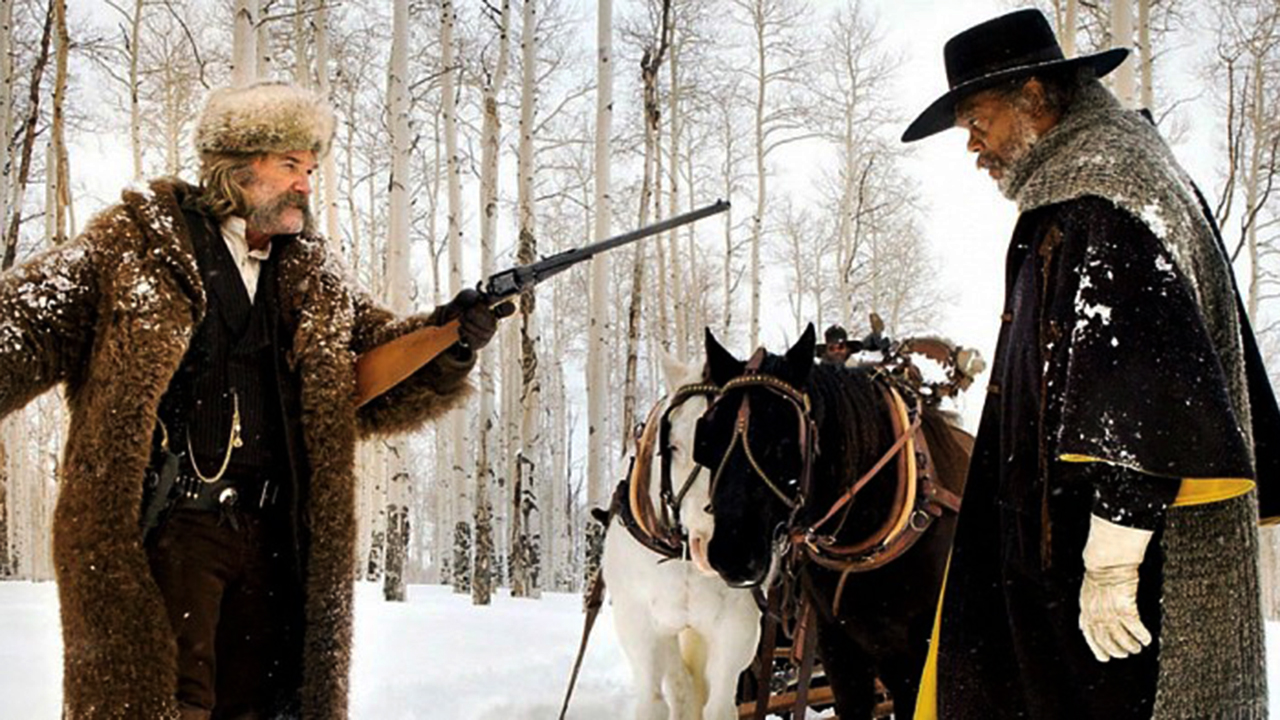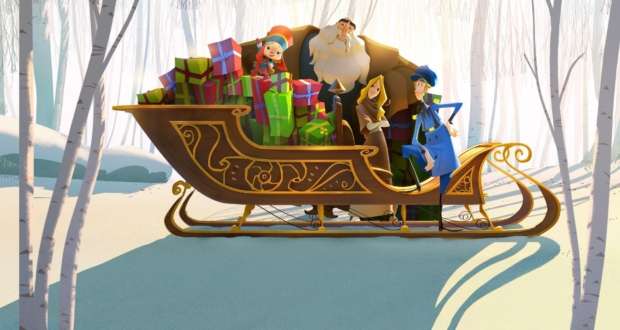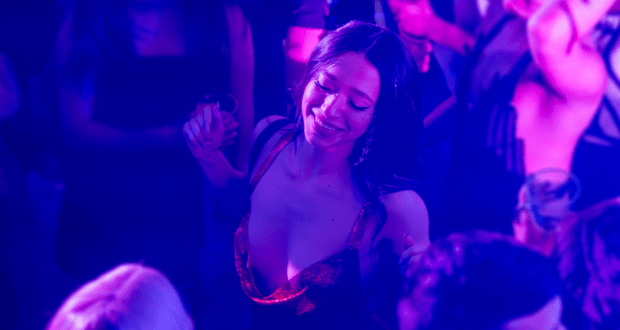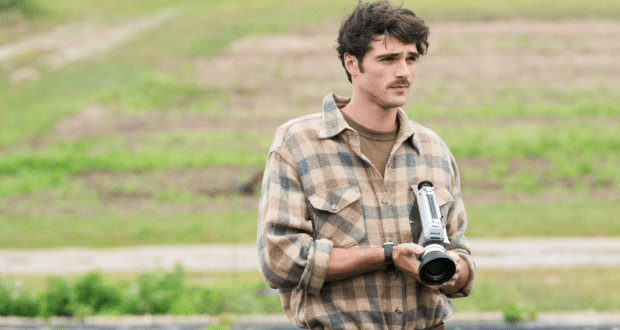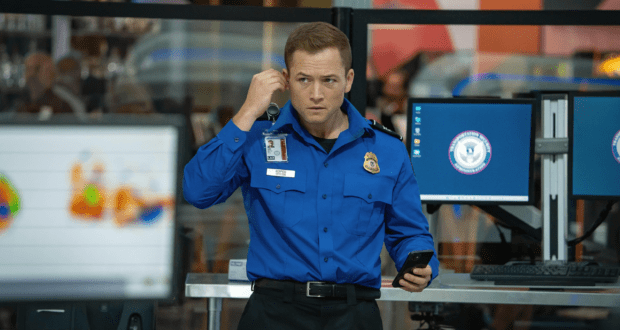[springboard type=”video” id=”1593589″ player=”tmbg001″ width=”599″ height=”336″ ]In the dead of a Wyoming winter, a bounty hunter and his prisoner find shelter in a cabin currently inhabited by a collection of nefarious characters.
In Quentin Tarantino’s The Hateful Eight, it’s all here. The pastiche of b-movies and spaghetti westerns—esoteric finds from cinema’s underbelly have always had a home in Tarantino’s films—the idea of the snowy western, having it scored by Ennio Morricone, that at first reminded me of Corbucci’s The Great Silence, though the larger influence has to be Joaquin Romero Marchent’s Cut-Throats Nine. There’s really bloody, explosive, good-humored violence. Takashi Miike’s indelible mark on movie violence must be behind the fist-pumping gore. There are muddled politics, too, criss-crossing a bombastic condemnation of racism in America (specifically against black Americans) with a script calling for the n-word to be spit out sixty-plus times. The b-word wasn’t far behind, and Jennifer Jason Leigh—who was absolutely fabulous and the vilest of the hateful eight—is battered and beaten from her first appearance on screen to her last. What makes The Hateful Eight so special is not some reinvention of Quentin Tarantino’s practices as a stylist, but the maturity of his craft. What’s inviting us in deeper is being a part of a celebration of cinema.
Continuing the warped historical-fantasy kick he’s been on since Inglorious Basterds and on through Django:Unchained, Tarantino takes us back to just after the Civil War has ended. Set in wintry Wyoming, a bounty hunter, John Ruth (Kurt Russell), aka “The Hangman,” is bringing Daisy Dermorgue (Jennifer Jason Leigh) to the town of Red Rock to hang. Along the way they bump into and pick up another bounty hunter, Major Marquis Warren (Samuel L. Jackson), who is an ex-slave and Union-leaning vigilante now making a living bringing criminals to just and an early grave. They scoop up another poor soul wandering the road alone; a Confederate goofball named Chris Mannix (Walton Goggins), the self-professed soon-to-be new Sheriff of Red Rock, once he gets there. The gang stops over at Minnie’s Haberdashery, a one-stop shop for wayward travelers. But Minnie ain’t home, and her shop is being cared for by three shifty individuals: a “Mexican” named Bob (Demian Bichir), an actual hangman named Oswaldo Mobray (Tim Roth), and cagey feller named Joe Gage (Michael Madsen), and, seemingly hapless, an old Confederate General, Sandy Smithers (Bruce Dern), is sitting in a chair near the fire. With the lot of them trapped by an impending blizzard, and suspicions high over Minnie having gone missing, Tarantino turns his large-scale western into being fit for a stage play.
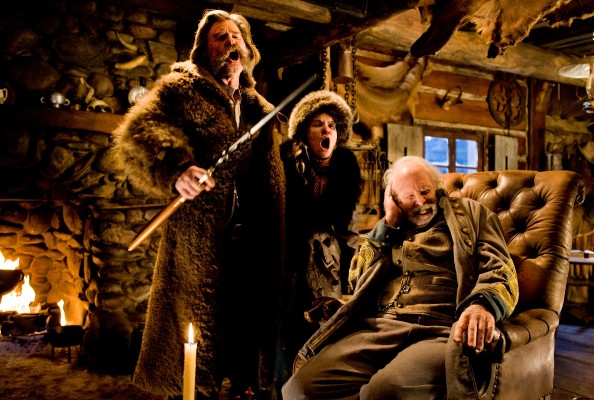
From Agatha Christie (and Rene Claire, who turned a Christie novel into And Then There Were None, a tranquil 1940’s mystery masterpiece I just happen to adore and am taking the opportunity to plug) to Louis Malle’s My Dinner With Andre, or Spielberg’s Lincoln, or Eric Rohmer, Tarantino has expanded the experiential elements of his films’ purview. He’s offering more to latch onto than before. There’s a mystery at the heart of The Hateful Eight, and the pacing of the action and dialogue, as well as the outbursts of violence, are patient, jangly, and arrhythmic. It leaves us always catching up, second-guessing our own anticipation. There’s no boiling wild displays of acting, like around the dinner table with Calvin Candie in Django, nor is there the mumbly calm affect of Reservoir Dogs. Though The Hateful Eight is too nuanced to pin down as a stretched out version of the bar scene in Inglorious Basterds, this claustrophobic tension showed up there first. And the tension is sustained through what must be a gloriously heavy script. This movie never shuts up—that’s where Andre, Lincoln, and Rohmer come in. And it’s riveting. With the blizzard doing its thing, they nail the door shut, and get the fire blazing and the stove piping hot. The steam floats off the stew in wiggly waves. Bearskin pelts hang with what must be tremendous weight and godly warmth. I’ve never been this cozy in a Quentin Tarantino movie before.
Shot in 70mm as a special attraction for moviegoers and cinephiles alike, Tarantino’s taken The Hateful Eight on a good old-fashioned roadshow. The three-hour runtime was beefed up by an overture and an intermission, as part of the attraction (if it is planned to play in the format near you, don’t hesitate to go, though the digital version hopefully doesn’t lose too much). It is all a part of The Hateful Eight being a celebration of cinema. The texture of every shot was so rich and velvety, smoothed over the screen like it was an actual canvas. The complexity of Tarantino’s composition and mise en scene nearly takes us out of the plot and into a film class. My eyes darted across the screen trying to discover every detail. So much is packed into such tight spaces, and to capture this on the grandest format possible underscores the intimacy. The last film I saw in 70mm was Paul Thomas Anderson’s The Master, which was also an intimate film, a story of two characters growing close, a film dominated by two actors playing bigger than normal screen characters. While there are considerably more actors here, the spaces we’re in are smaller. We go from John Ruth’s carriage (having squeezed four characters with big personalities and bigger mouths inside) to Minnie’s (admittedly large) Haberdashery, hardly allowed to step foot out into the dark, cold, domineering, blizzard soaked Wyoming lands. Instead of indulgent wide-angled shots of the endless terrain surrounding Minnie’s, or a wandering western reveling in nature, we’re shut inside to be with these characters, and to realize the power of cinema rests not in what it can show but how it shows it.
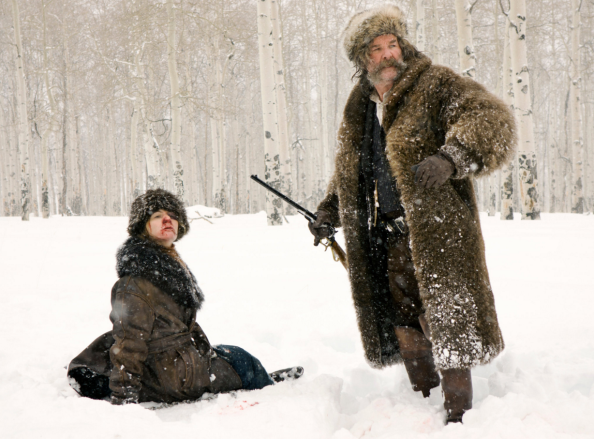
The characters in The Hateful Eight are distinct and some are unforgettable, but the movie isn’t dominated by acting. We can go down the line. Michael Madsen is merely a presence, a far cry from Reservoir Dogs or Kill Bill. Tim Roth does a Christoph Waltz impression with a twist, which turns funny and kooky, but cartoony and insignificant. Though Dern, Bichir, Russell, and Jackson earn major points for their efforts—Jackson and Russell especially are forces in their gruff, loud, confident selves—it is Goggins and Leigh who lead the pack, transforming their characters to caricatures with range and depth. But let’s be real. The days of Pulp Fiction, Reservoir Dogs, Jackie Brown, they are long past. With each passing entry in this loose trilogy of historical-fantasy-revenge-westerns, and assumedly with only two more Tarantino films left before he folds up his chair, fewer of his characters reach enough singularity to belong suddenly to the actor playing them—perhaps Christoph Waltz in Inglorious snuck out with a transcendent, career-defining performance, but he’s been the exception to the rule lately. In a way the actors are the most purposeful set pieces, functioning as the life within Tarantino’s modern visions, but not as coauthors. The Hateful Eight is all about the medium, and Tarantino’s place in it, respect for what he respects of it, and is another way he will be leaving his stamp on it.
-
Acting - 7.5/10
7.5/10
-
Cinematography - 9/10
9/10
-
Plot/Screenplay - 8/10
8/10
-
Setting/Theme - 6.5/10
6.5/10
-
Buyability - 10/10
10/10
-
Recyclability - 10/10
10/10
